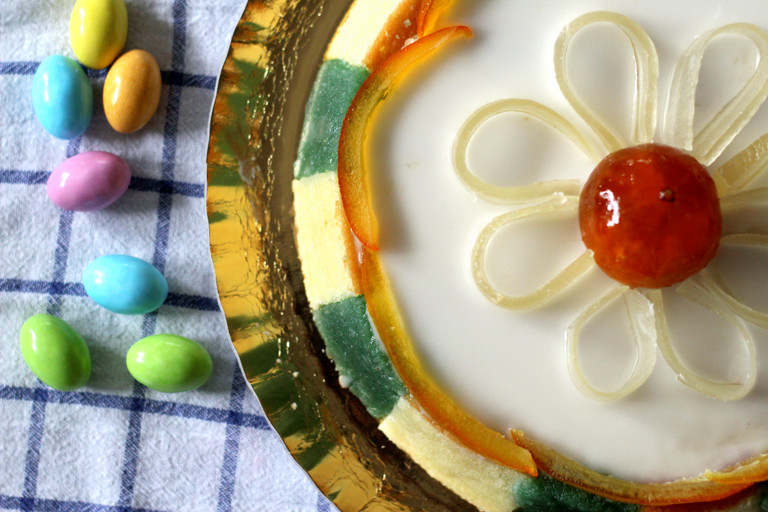Cassata
- medium
- 6
- 2 hours 30 minutes
Antonella's colourful cassata recipe makes a delightful Easter dessert. This Sicilian dish is packed with flavours of the island – creamy ricotta, aromatic almond and vibrant candied fruits all make this a brilliant celebration pudding.
If you are thinking of a trip to Sicily, well, springtime is the best period of the year.
You will be welcomed by sunny and warm days, sunlight and aromas... the smell of orange blossom, jasmine, the sea, the smell of the pasticcerie with their triumph of savoury and sweet aromas.
Springtime, and Easter, in Sicily means cassata! In fact, while you can find this cake at most other points of the year (except during the hot summer) the cassata was born to celebrate the end of Lent.
Nothing better represents Sicily than the cassata: the softness of the ricotta cream, the smell of the marzipan, the colours of the beautiful candied fruits, the baroque decorations.
While we are not sure about the origin of its name – be it from the Arab word qas’at, the name of the ancient tin used to prepare the cake, or the Latin word caseum, for cheese – we know that the cassata evolved over time.
We find the first version of the cake between the ninth and eleventh century, when the Arabs brought sugarcane, almonds and fruits like clementines and lemons to Sicily.
The coloured marzipan was introduced by the nuns of the convents and with the Spanish domination we have the pan di spagna, the sponge cake, and the chocolate.
So when you are in Sicily on a sunny terrace overlooking the sea, with a slice of a cassata and a good glass of passito, consider that you're eating not only a cake, but a piece of history.
It's simple to prepare a good Cassata at home. The recipe you find below is my family version. I reduce the sugar amount compared to a traditional recipe and – as I'm not a candied fruits lover – I don't include them in the ricotta cream, but just use them to decorate the cake.
For this recipe you will need a 21–22cm round tin with sloped sides for the cassata and a 26cm round cake tin for the sponge cake.
Ingredients
Metric
Imperial
Sponge cake
- 6 eggs, medium, at room temperature
- 180g of caster sugar
- 180g of self-raising flour, sifted
- 1 pinch of salt
- 1 tsp vanilla extract, natural
Ricotta cream
- 700g of ricotta, sheep's milk
- 250g of caster sugar
- 50g of dark chocolate, finely chopped
- 1 tbsp of Amaretto, rum, or other preferred liqueur
Marzipan
- 100g of almonds, peeled and finely ground
- 50g of icing sugar, sifted
- 25g of caster sugar
- 25g of water
- green food colouring
Icing
- 200g of icing sugar
- lemon juice
To decorate
- candied fruits
Method
Get in touch
Please sign in or register to send a comment to Great British Chefs.



